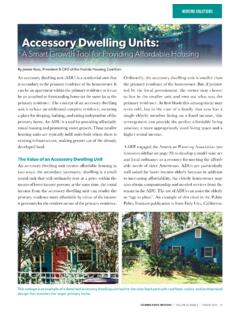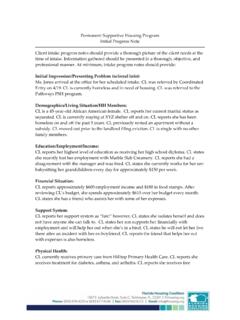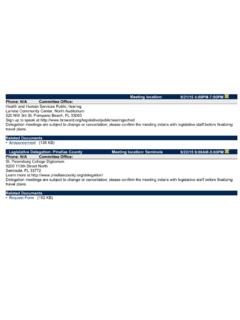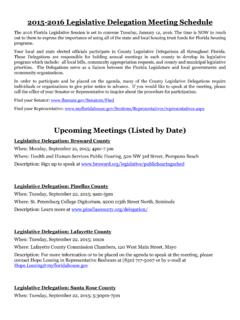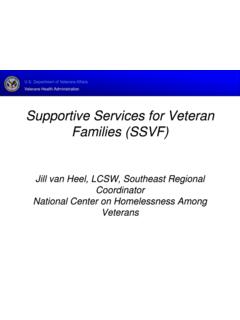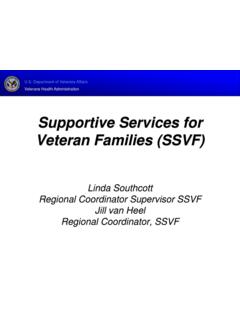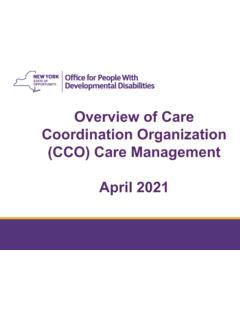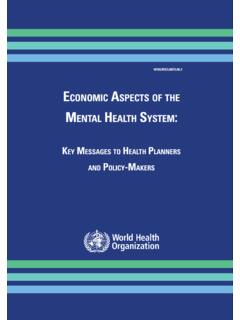Transcription of Solution-Focused Planning and Assessment
1 Copyright 2016. Springer Publishing Company. All rights reserved. May not be reproduced in any form without permission from the publisher, except fair uses permitted under S I X. Solution-Focused Planning and Assessment Hope is crucial to recovery, for our despair disables us more than our disease ever could. Esso Lette Hope is the anchor of the soul, the stimulus to action, and the incentive to achievement. Anonymous It is important to keep in mind that the worker and client/family form a system and that systems by de nition are nonlinear and mutually reactive. Systems do not follow simple cause and effect; the worker affects the client/family and the client/family affects the worker. Systems are self-reinforcing. If we accept this premise, then the question arises, which do we reinforce: the problem or the solution?
2 It is illusionary to assert that assessments are neutral and objective. Ein- stein acknowledged that the observer affects the observed; assessments are interventions. Unlike expert assessments, Solution-Focused conversations are not built on a foundation of expert evaluation. They are an ongoing process that is subjective and coconstructive. In Chapter 5, we discussed the client worker relationship and suggested that there are several ways that the client and worker together form a collabo- rative relationship. In this chapter, we plan to expand on this topic of relation- ship development by clarifying a desired future and steps to that future as the client and worker together coconstruct goals, strengths, and possibilities.
3 One major difference between a Solution-Focused and problem- focused orientation or applicable copyright law. is that we nd it dif cult to separate Assessment an independent, objective process from intervention, a uid, coconstructive process. When we use the terms Assessment and Planning , we intend to connote that the client takes the lead in determining what his or her goal is for the work together and what resources reside within himself or herself and the social contexts. If necessary, the worker might provide useful information, which the client is not aware of yet. We have found it useful to rst nd out what the client knows. 106 Solution-Focused CASE MANAGEMENT. Copyright 2016. Springer Publishing Company. All rights reserved.
4 May not be reproduced in any form without permission from the publisher, except fair uses permitted under The National Consensus Statement on Mental Health Recovery (NCSMHR). notes that as one of the 10 factors in recovery, a nonlinear process is required: Recovery occurs via many pathways: Individuals are unique with dis- tinct needs, strengths, preferences, goals, culture, and backgrounds . including trauma experiences that affect and determine their pathway(s).. Recovery is non-linear, characterized by continual growth and improved functioning that may involve setbacks.. Set- backs are a natural, though not inevitable, part of the recovery process. (SAMHSA, 2011). Obviously, the focus of the case manager will not always be on mental health issues as the primary challenge.
5 Yet, solution-building principles are applicable to addictions, child protective services, hospice, health issues, aging, and other areas of practice. According to the Substance Abuse and Men- tal Health Services Administration (SAMHSA), self-direction is another fun- damental component that is directly related to recovery: Consumers lead, control, exercise choice over, and determine their own path of recovery by optimizing autonomy, independence, and control of resources to achieve a self-determined life. By de nition, the recov- ery process must be self-directed by the individual, who de nes his or her own life goals and designs a unique path towards those goals. (SAMHSA, 2011). When the focus is on what the person has achieved so far, what resources have been or are currently available to the person, what the person knows and what competencies he or she possesses, and what aspirations and dreams he or she holds, we are engaged in a collaborative partnership (Rapp & Goscha, 2006, p.)
6 57). Validation of the client is the usual result of Solution-Focused conversa- tions. It is not power over the client by the worker but a coconstruction of the person's power and potential. Solution-Focused practice requires a rede ni- tion of us as workers, the client, the role each plays in the endeavor, and the responsibilities inherent in the respective roles. Rappaport (1990) describes empowerment1 in this manner: It is always easier to see what is wrong, what people lack. Empowering [collaborative part- nerships] attempts to identify what is right with people, and what resources are already available, so as to encourage their use and expansion under the control of the people of concern (p. 12). or applicable copyright law.
7 Saleebey (1997) describes our society's obsession with what is wrong: Our culture is obsessed with, and fascinated by, psychopathology, victimization, abnormality, and moral and interpersonal aberrations (p. 4). 1. In this and succeeding quotes, the word empowerment is used by the various authors. The dictionary de nes empowerment as to give somebody power or authority. This seems to us to be a misnomer. As prac- titioners, we do not see that we give people power or authority but help them to realize the power and authority that already resides within them. Our preferred term for what we do is validation de ned as to con rm or establish the truthfulness of or soundness of something. 6 Solution-Focused Planning and Assessment 107.
8 Copyright 2016. Springer Publishing Company. All rights reserved. May not be reproduced in any form without permission from the publisher, except fair uses permitted under Rapp (1998) wrote the de nitive text on strengths-based case management . practice with those with severe and persistent mental illness. The following is a partial listing of the main points for conducting a strengths Assessment ; notice the common threads that they describe with what we have been discussing in terms of constructing a Solution-Focused and strengths-based2 lens for practice: What the person wants, desires, aspires to, dreams of; person's talents, skills, and knowledge. A holistic portrait. Gathers information from the standpoint of the consumer 's view of their situation.
9 Ethnographic [learning the local language of this unique person]. Is conversational and purposeful The focus is on the here and now, leading to a discussion on the future and past asking how they have managed so far. Persons are viewed as unique human beings who will determine their wants within self and environment. Is ongoing and never complete with the relationship primary to the process. Encouragement, coaching, and validation is [sic] essential to the process. Explores the rejuvenation and creation of natural helping networks Consumer authority and ownership The professional asks: What can I learn from you? (p. 93). Spindel (2008) expresses the potential issues when the worker takes on the role of expert, and the potential rewards when clients are coconstructed as being experts of themselves: Putting together an empowerment plan involves some personal chal- lenges for the case manager.
10 She or he will have to be able to overcome his or her own tendencies to tell the client what she or he should do, rescue the client, or make decisions for her or him. The skill in doing this kind of plan rests with asking the client pertinent questions.. It will mean talking in meaningful ways so that the [worker] gets to know the client well, and the client gets to know her- or himself well. These kinds of conversations can lead to real insights [self-awareness]. by the client, and [this new awareness of strengths, desires and poten- tials] can help fuel their progress. (p. 65). In this same vein, Walter Kisthardt (1997), another originator of strengths- based practice, offers additional perspectives with a focus on case management : or applicable copyright law.

